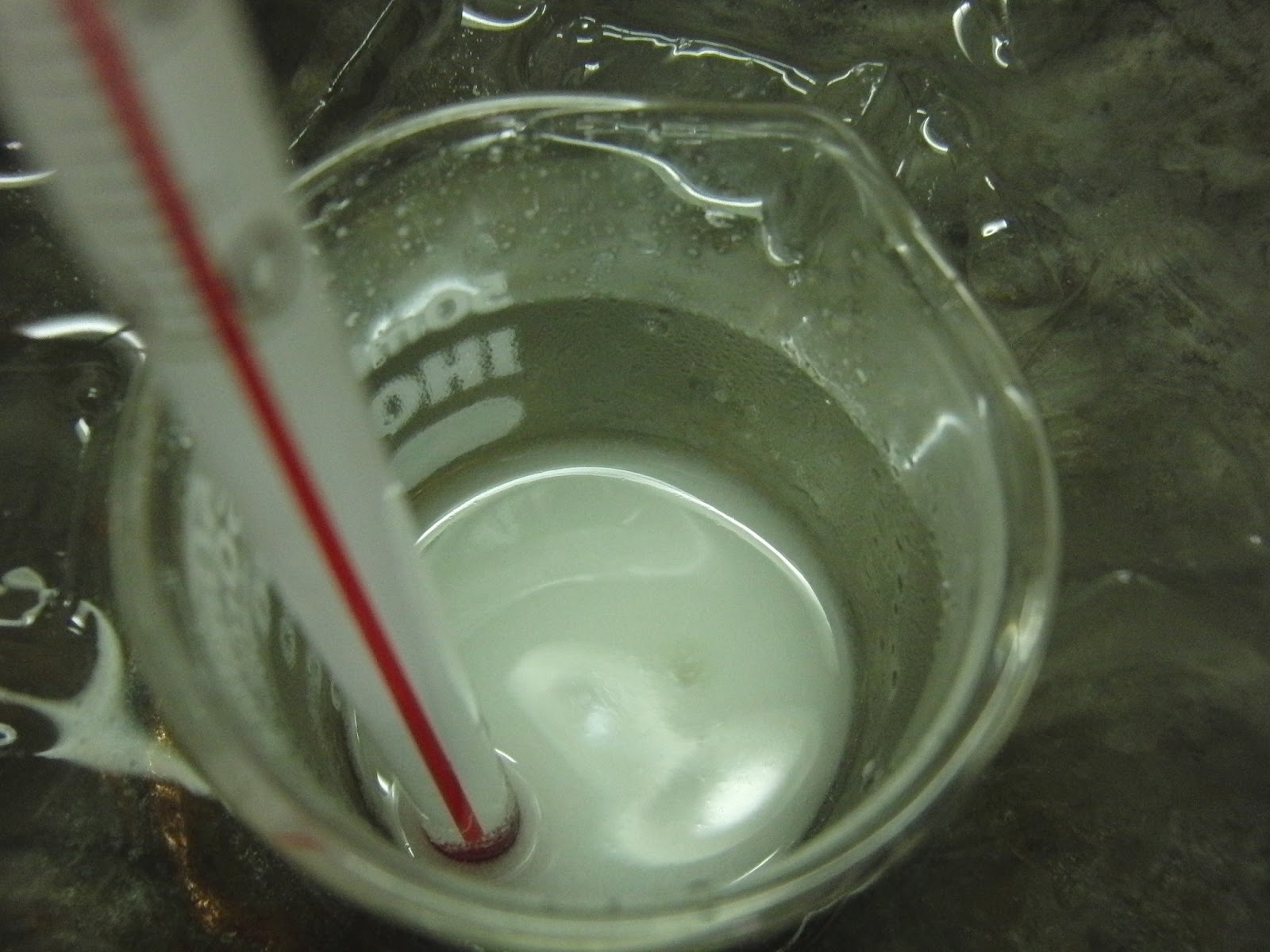Sodium borohydride is an odorless white to
gray-white microcrystalline powder which often forms lumps. It is soluble in
water, without decomposition, however it reacts vigorously with acid solutions.
The salt can be recrystallized by dissolving in warm (50 °C) diglyme followed
by cooling the solution. (Wikipedia)
The reduction of an aldehyde or ketone with
sodium borohydride is straight forward and usually affords a high yield of the
alcohol. The usual procedure (and the one employed in thi sex periment)
involves dissolving the borohydride in 95% ethanol and adding the carbonyl compound
to this solution. To ensure complete reaction, an excess of sodium borohydride
is used.
The reaction between sodium borohydride and
acetophenone is exothermic. Therefore, it is important to add the acetophenone
drop-wise and to control the reaction temperature with an ice bath. After the
reaction has been completed, the excess borohydride and the
ethoxyborohydridesare destroyed with aqueous acid. Because hydrogen gas is
evolved, this treatment with acid must be carried out in a fume hood or a very
well-ventilated room.
Because ethanol, the reaction solvent, is
water-soluble, a clean separation of organic and inorganic products cannot be
achieved by a simple extraction with water and diethyl ether at this point.
(Too much product would be lost in the aqueous ethanol layer.) To circumvent
thisproblem, the first step in the work-up is to boil off much of the ethanol.
In a larger-scale reaction, the ethanol would be distilled and collected. In a
small-scale reaction such as in this experiment, the ethanol can be boiled away
in the fume hood. When most of the ethanol has been removed, the product
1-phenylethanol oils out.
Water and diethyl ether are then added to
the residue for the extraction of the organic compounds from the inorganic
salts. The ether extract is dried with either sodium sulfate or magnesium sulfate.
The crude product is obtained by distilling the ether.
Because of its high boiling point,
1-phenylethanol cannot be distilled at atmospheric pressure. Although it could
be vacuum-distilled, distillation could not separate it from unreacted starting
material (if any) because the two compounds have boiling points only 1E apart.
(An infrared spectrum can be used to determine if any ketone is present in the
product.)
Chemicals
1.
Acetonphenone: 4.000g
2.
Anhydrous sodium sulfate
3.
Diethly ether: ~15mL
4.
95% ethanol: 10mL
5.
3M hydrochloric acid: 3~4mL
6.
Sodium borohydride: 0.500g
Procedure
4.
Add the acetophenone dropwise
to the borohydride solution while stirring the mixture continuously. Keep the
temperature of the reaction mixture between 30~50℃ by controlling the rate of addition and
by cooling the beaker in an ice bath.
5.
After the addition is
completed, allow the mixture to stand at room temperature for 15 minutes with
occasional stirring.
8.
Cool the reaction mixture in an
ice bath.
9.
Transfer the mixture in a
separatory funnel and add 7mL diethyl ether and add some water to dissolve the
precipitate.
10. Extract aqueous layer with the diethyl ether and do it again with another
portion of diethyl ether.
11. Combine the ether extracts and wash them with an equal volume of
water.
15. Measure the yield and refractive rate.
Experiment Record
Weight of 1-phenylethanol
|
2.850g
|
Theoretical weight
|
4.066g
|
Yield
|
70.07%
|
Reflective Index in 30.1℃
|
1.5023
|



















Muito legal!
ReplyDeleteThe unequal discount of narrow ketones has been attained through a countless of different approaches. Early discounts gave low to reasonable enantiomer excesses (ee's), but more contemporary reagents have led to affected increases in enantioselectivity. Lithium Carbonate Battery grade Supplier and manufacture company from china.
ReplyDeleteeuropean vacations are very exciting sepcially if you got to visit many places at once,. check over here
ReplyDeleteThere is a permanent cure for HSV1&2 and Dr. easbnam herbal medicine is the perfect cure for herpes and I have used it and I was cured from HSV 2.The cure works perfectly with no side effects. Please I urge you to contact Dr. easbnam now through his email;dreasbnamrootandherbal1@gmail.com or what'sap +2348106600701 and he is capable of curing HIV/AIDS, HERPES, HPV, HSV1&2, COLD SORE, CANCER ,DIABETES
ReplyDelete